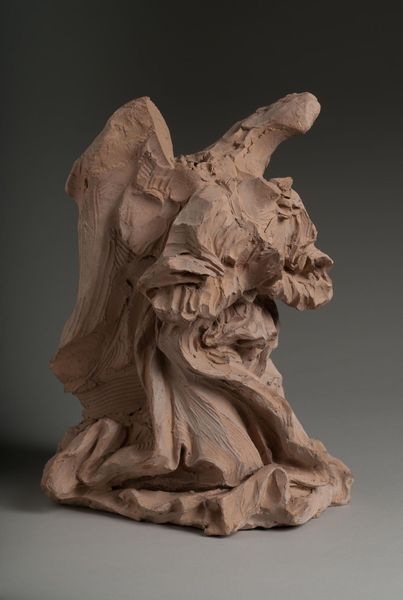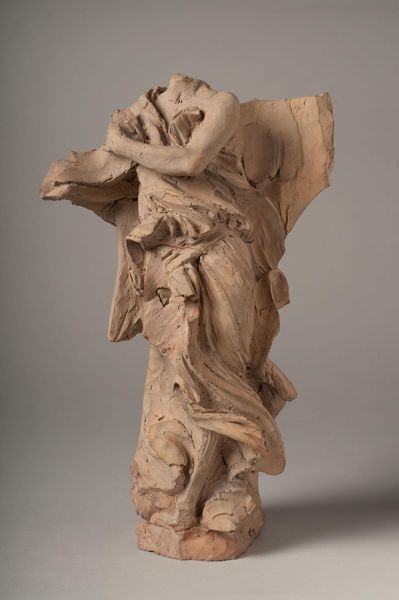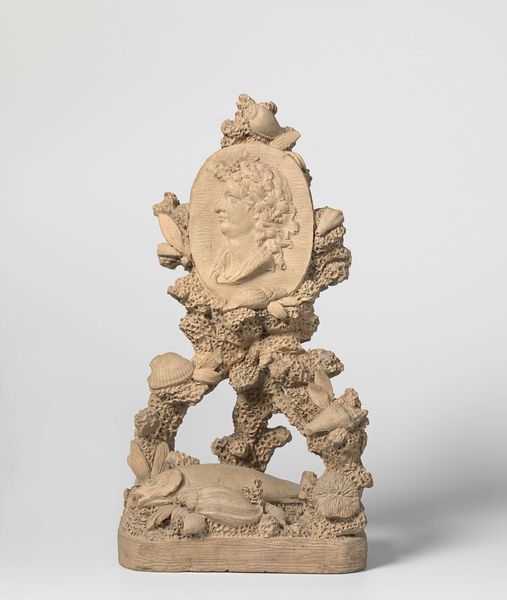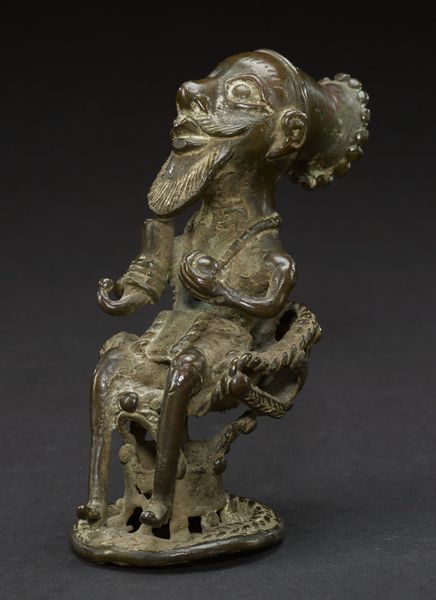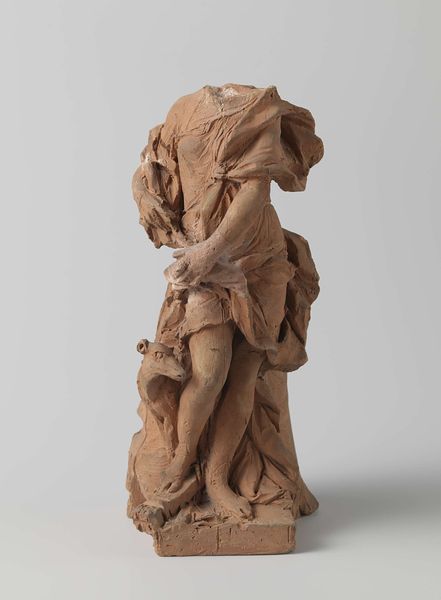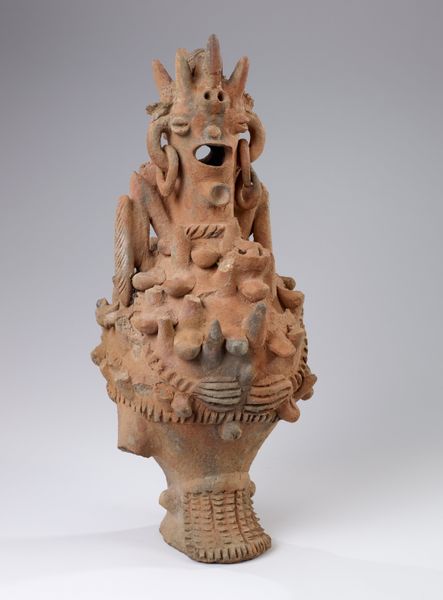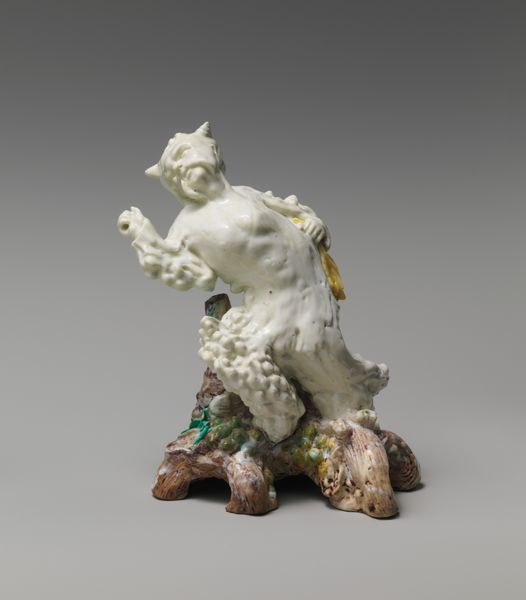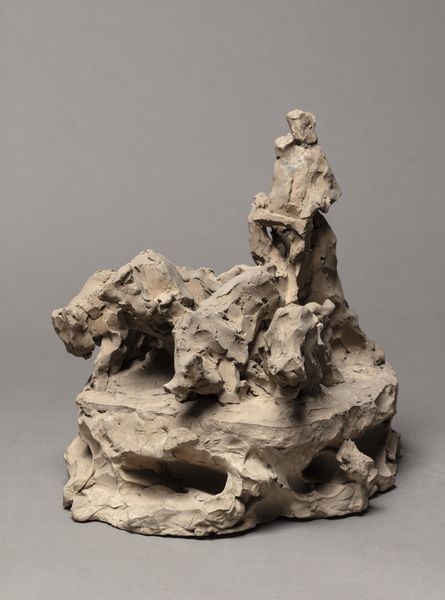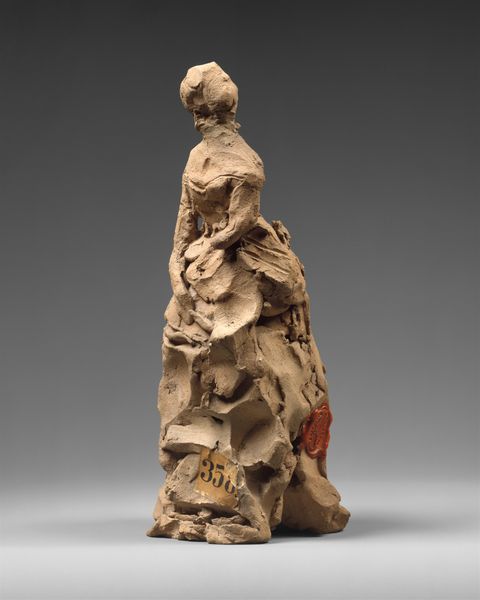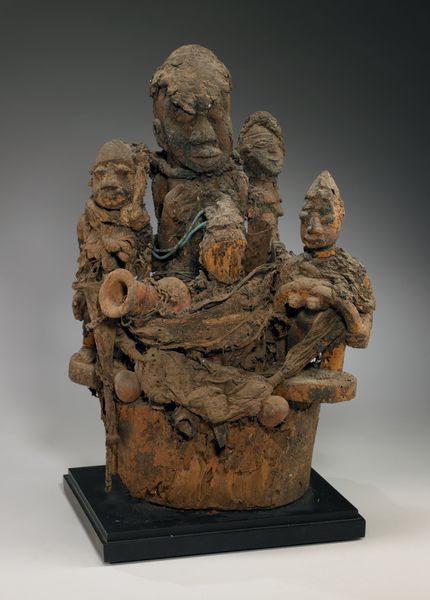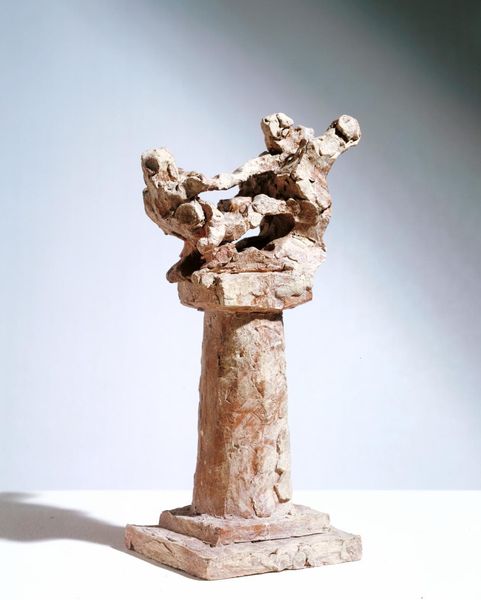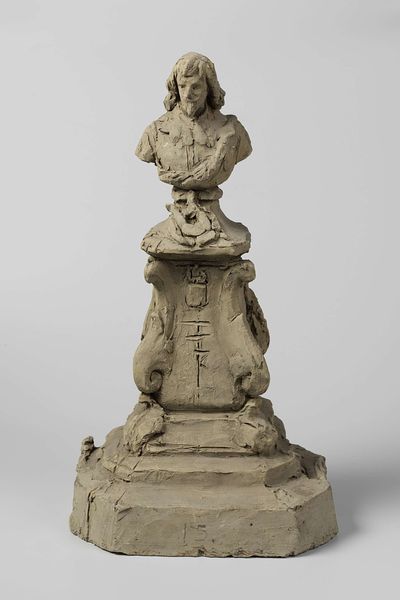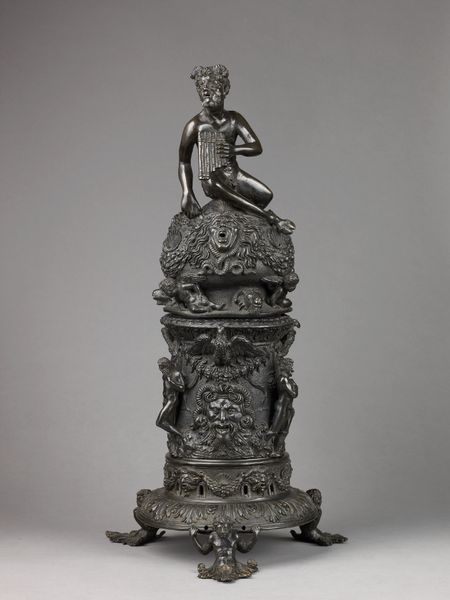
Model for a Proposed Monument to Commemorate the Invention of the Balloon 1779 - 1789
0:00
0:00
Dimensions: Overall (confirmed): 43 1/8 x 24 3/4 x 20 3/8 in. (109.5 x 62.9 x 51.8 cm)
Copyright: Public Domain
Editor: Here we have Clodion's "Model for a Proposed Monument to Commemorate the Invention of the Balloon," crafted from bronze between 1779 and 1789. It feels very dynamic and ornamental. What are your immediate observations, seen through a formalist lens? Curator: Its Rococo flamboyance certainly speaks to its era. Notice how Clodion masterfully utilizes the bronze medium to create intricate textures. Consider the swirling clouds juxtaposed with the smooth surface of the globe above. This contrast creates a sense of lightness and movement, drawing the eye upwards. Do you perceive any disruptions in the sculpture’s compositional unity? Editor: Well, the base and the globe seem separate conceptually. Like the globe was almost 'placed' atop of the very active and decorated base. Curator: Precisely! The base is visually dense and grounded with numerous figures, whereas the globe, sparsely populated, suggests a departure from earthly constraints. This contrast establishes a visual hierarchy that underscores the balloon's revolutionary capacity to transcend boundaries. How does the application of light further enhance the work’s formal qualities? Editor: I would say that because the globe is more simple and less 'busy,' light easily reflects off its surface. This, in contrast to the busy base, illuminates the entire composition, making it look bigger than it might seem at first. Curator: Exactly. The formal elements - line, shape, form, and texture - all harmonize to convey a very specific narrative, even without detailed historical context. Editor: So, analyzing the interplay of textures, the balance between forms, and the movement implied through the figures gives a clear indication of the intended narrative and message. That's very helpful! Curator: Indeed. Close formal analysis is always a rich method, yielding considerable insights even independent of historical interpretation.
Comments
No comments
Be the first to comment and join the conversation on the ultimate creative platform.
